How Does Migration Change Us?
Where does it come from?
Think about familiar objects you see and use every day. Where do they come from?
We may assume we know the answer, but the truth can be surprising. Familiar things can turn out to have unexpected origins. And things we may find strange at first can turn out to be more familiar than we expected.
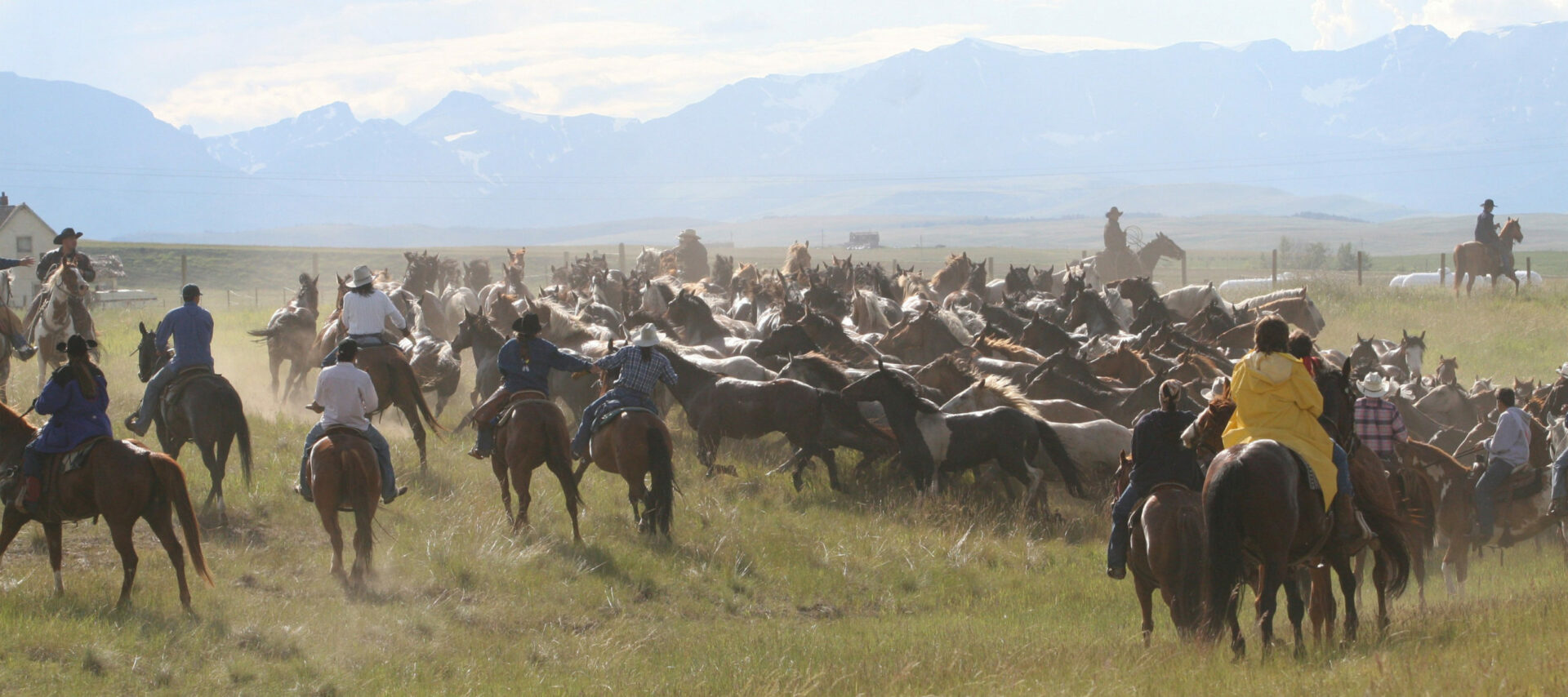
Riders on the Blackfeet Indian Reservation in Montana herd horses for the annual North American Indian Days celebration, 2010. Blackfeet horse culture dates back almost three centuries and today includes rodeo, ranching, horse racing, and Indian relay racing. Photo by Teri Loring Dahle
Horses
The earliest horses evolved in North America millions of years ago and crossed over the Bering Land Bridge into Asia and beyond. These early horses went extinct in North America around 10,000 years ago. But Spanish conquistadors reintroduced horses to the Americas in the early 1500s, and they spread rapidly throughout the hemisphere.
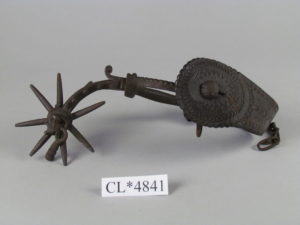
A riding spur made in Mexico in the mid-1800s. Spanish colonizers in Mexico introduced many of the techniques and tools of riding culture associated with the American West. National Museum of American History, Smithsonian Institution (Division of Cultural and Community Life)
Cowboys
Cowboys, often associated with the U.S. western “frontier,” were originally Indigenous and mestizo Mexican cattle herders called vaqueros (from the Spanish word vaca, meaning cow). The word “buckaroo” was likely derived from this.
Lift the panels below to reveal the surprising origins of familiar things.
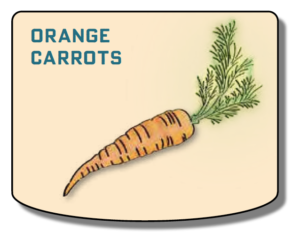
ORANGE CARROTS
Carrots originated in Afghanistan around 5,000 years ago. Early carrots came in a variety of colors, including purple and yellow. Orange carrots were probably first cultivated in the Netherlands, where they became associated with the ruling House of Orange.
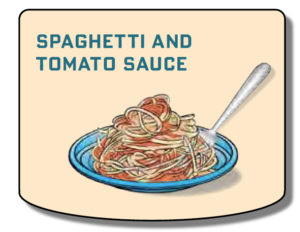
SPAGHETTI AND TOMATO SAUCE
Many people associate spaghetti and tomato sauce with Italy, but noodles actually originated in Asia. Arab traders brought them to Italy as early as the 400s CE. Tomatoes originated in Central and South America, where Aztec and Inca peoples ate them. They were introduced to Europe in the 1500s, where they were originally thought to be poisonous.
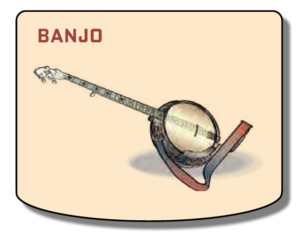
BANJO
The banjo is closely associated with American folk and country music, but it has its origins in West Africa. West Africans play similar stringed instruments, including the akonting, thought to be one of the precursors of the banjo. Enslaved people brought knowledge of these instruments to the Americas, where they evolved into the banjo we know today.

TREADMILL
If you ever become bored while running on what seems like a never-ending treadmill, imagine yourself a prison inmate, required to walk some ten hours a day on a revolving wooden cylinder. British engineer William Cubitt designed the first treadmill or “everlasting staircase” to make prisoners tread without ever getting anywhere. Think about that the next time you hit the gym.
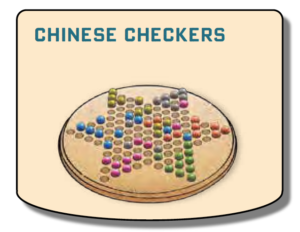
CHINESE CHECKERS
You would expect Chinese Checkers to come from China, but the popular game was actually invented in Germany in the 1890s. It was marketed in the U.S. in the 1920s as “Chinese Checkers” to associate it with the game Mahjong from China, which was becoming popular in the U.S.
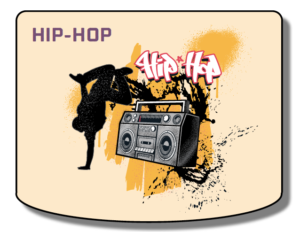
HIP-HOP
Hip-hop began in New York City’s Bronx in the 1970s. Some of hip-hop’s early pioneers were from families who had migrated from Barbados, Jamaica, and Puerto Rico. They blended African American and Caribbean influences to create music, as well as a cultural movement that encompasses art, fashion, dance, and language.
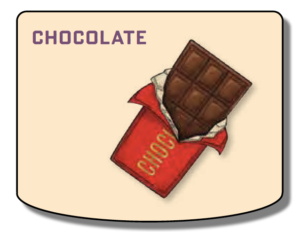
CHOCOLATE
Chocolate has its origins in Mexico and Central America, where Olmec, Maya, and Aztec people fermented, roasted, and ground cacao beans into bitter beverages. Spanish settlers brought the drink back to Europe in the 1600s, where sugar was added to suit European tastes. Chocolate evolved into the modern chocolate bar by the mid-1800s.
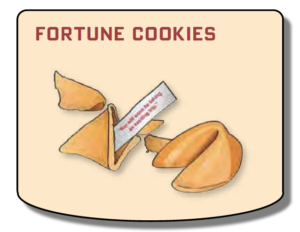
FORTUNE COOKIES
Today, no meal at a Chinese restaurant in the U.S. is complete without a fortune cookie. But these sweet treats didn’t originate in China. They were introduced by Japanese immigrant confectioners in California in the early 1900s. Chinese restaurants began making their own fortune cookies in the 1940s, and the tradition stuck.
Talkback question How does migration affect you?
Migration is part of our daily lives, from the clothes we wear to the words we use. Think about your favorite foods, music, and dance moves. Where do they come from? Share your migration stories using #WorldOnTheMove
Talkback question Share Your Story
What’s your favorite food? Do you know where it comes from? How do you think migration may have contributed to it? Share your migration stories using #WorldOnTheMove
Crossing Cuisines
What could be more British than an Indian curry?
British influence in India began in the 1600s with the arrival of the English East India Company. Great Britain ruled India from 1858 until its independence in 1947. During this long period, the British borrowed traditional Indian dishes and adapted them to their own tastes. The result was Anglo-Indian cuisine. Anglo-Indian cuisine quickly became popular in Great Britain, where it was served in London coffeehouses as early as 1809. Today, many consider the Anglo-Indian dish Chicken Tikka Masala to be Great Britain’s national dish.
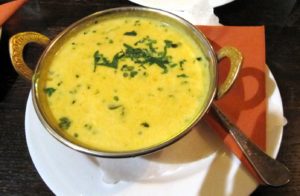
Mulligatawny was originally a South Indian dish consisting of a vegetarian sauce poured over rice. Its name means “chili water” in the Tamil language. The dish later evolved into a thick soup to which meat was added, to appeal to British tastes. Photo by GeoTrinity/Wikimedia Commons
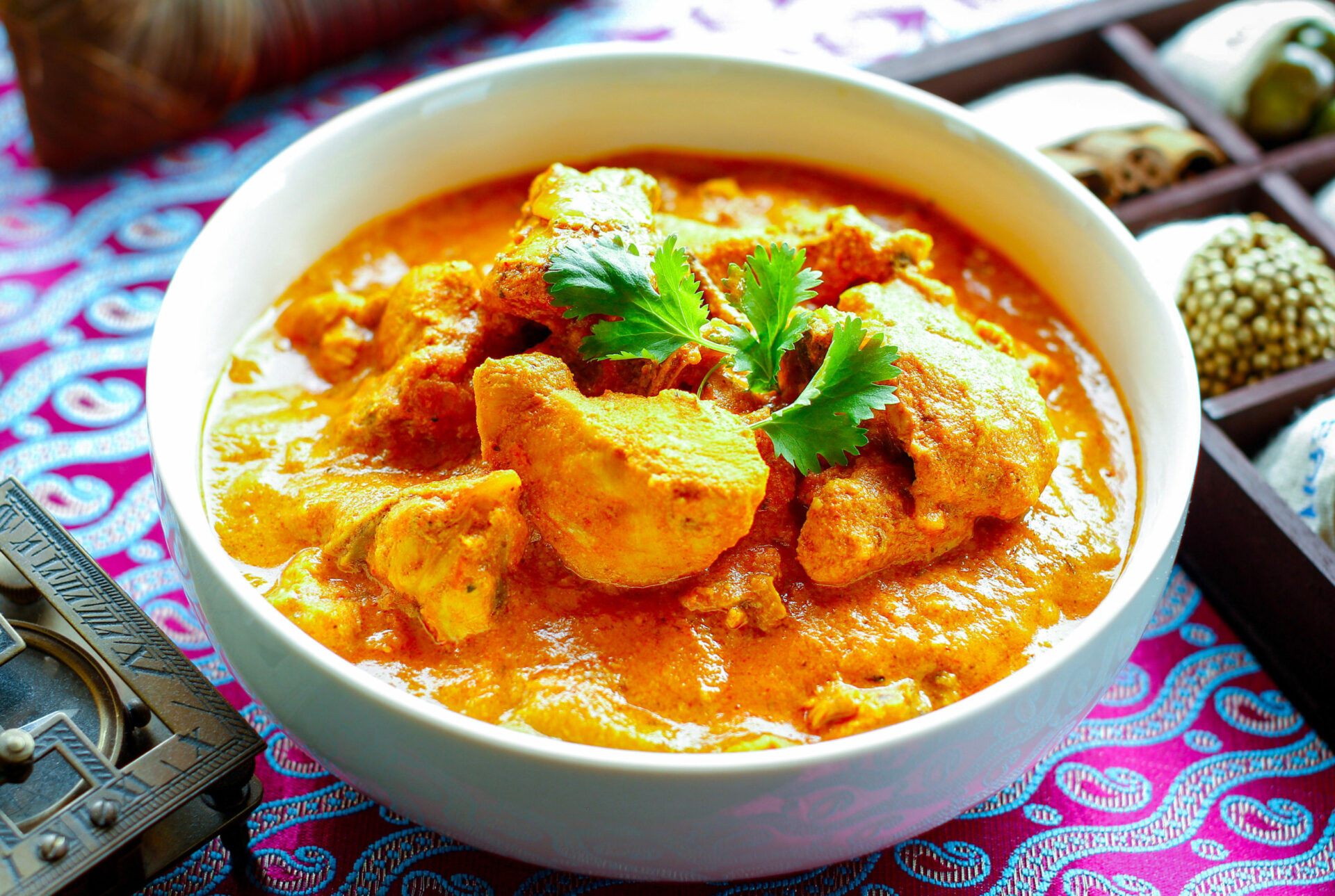
In 2001, the British Foreign Secretary described Chicken Tikka Masala as “a true British national dish.” It features marinated chicken served in a mild tomato-cream sauce. Photo by Feroze Edassery
Traveling Tastes
Veeraswamy, London’s oldest Indian restaurant, was established in 1926 by the great-grandson of an English general and an Indian princess. The restaurant now includes a menu full of regional Indian dishes. It earned a Michelin star, a prestigious international honor, in 2016.
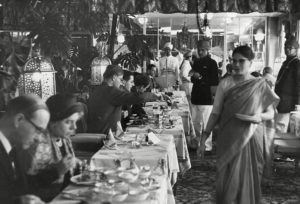
Veeraswamy’s dining room, 1963. DailyMail.com
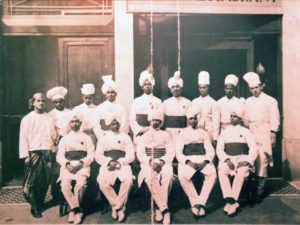
The original team of chefs at Veeraswamy, 1926. Shutterstock.com